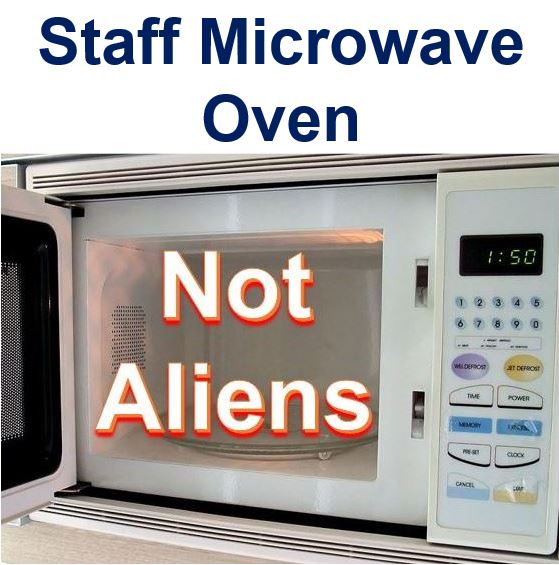Scientists at Parkes Radio Telescope in Australia now know where those alien signals they kept picking up came from – their staff kitchen’s microwave oven. Since 1998 everybody had been wondering whether they came from intelligent aliens from far away in space.
In 1998, the Parkes Radio Telescope, located in New South Wales, started detecting unusual signals. Eminent scientists theorized they may have been signals from another galaxy, interference from lightning strikes or emissions from neutron stars turning into black holes.
Now we all know these signals were caused by Parkes staff members opening the door of their microwave oven during its cycle, i.e. opening it too early, before the ‘ping’ sound that tells you it has stopped cooking.

After all those exciting theories about aliens, the culprit was found to be the staff kitchen’s microwave oven.
When staff members opened the microwave oven door too early, 1.4GHz microwaves from the magnetron shutdown phase were able to escape, and were picked up by the radio telescope.
Perytons present when lots of staff were in
The mystery started being solved when one of the astronomers, PhD student Emily Petroff, noticed that the signals, known as perytons, were only being picked up when lots of people were working in the office.
With a new piece of equipment, they found that the signals matched those transmitted by a microwave oven if the door was opened too early.
In an interview with ABC News, Ms. Petroff said:
“It turns out that you can generate these particular local signals by opening the door of the microwave to stop the microwave, and that produces these weird bursts that we’re seeing at Parkes. It was kind of a surprise to all of us.”
So, all these years of mystery and excitement were caused just because some people were too impatient to wait for their microwave to finish heating up their meal.
The team at Parkes Observatory wrote in a paper uploaded to arXiv:
“Until now, the physical origin of the dispersion-mimicking perytons had remained a mystery. We have identified strong out-of-band emission at 2.3–2.5 GHz associated with several peryton events.”
“Subsequent tests revealed that a peryton can be generated at 1.4 GHz when a microwave oven door is opened prematurely and the telescope is at an appropriate relative angle.”
“Radio emission escaping from microwave ovens during the magnetron shut-down phase neatly explain all of the observed properties of the peryton signals.”
However, the Fast Radio Bursts are real
While the peryton mystery has been solved, nobody has been able to explain where the fast radio bursts (FRBs) come from.
Ms. Petroff said:
“We have solved the peryton mystery and increased our confidence that FRBs are real. It’s nice to get perytons out of the way so we can focus on what we’re really interested in.”
An FRB was observed tearing through space in January 2015. They have been observed since 2007, when scientists had been searching through Parkes data on an unrelated project.
Since 2007, Parkes has picked up six more FRBs, while a seventh was detected by the Arecibo telescope in Puerto Rico.
Citation: S. Bhandari, E. Petroff, E. F. Keane, E. D. Barr, J. E. Reynolds, S. Kudale, J. Sarkissian, P. G. Edwards, J. Stevens, P. Chandra, C. Brem, A. Jameson, S. Burke-Spolaor, S. Johnston, N. D. R. Bhat. “Identifying the source of perytons at the Parkes radio telescope.” arXiv:1504.02165 [astro-ph.IM]. Submitted on 9 Apr 2015.
Video – This signal was not from a microwave oven
